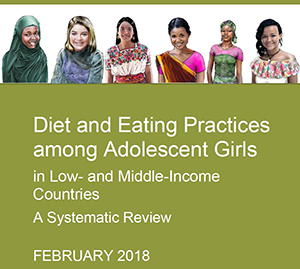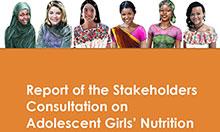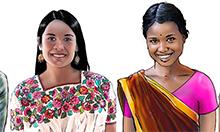A Systematic Review

Abstract
Adolescent girls in low-and-middle-income countries (LMIC) have poor nutrition profiles, including high risks for undernutrition, overweight/obesity, and micronutrient deficiencies. To better understand the current dietary intake and practices of adolescents in LMIC, we undertook a large-scale systematic review. We identified 288 studies which passed the inclusion and exclusion criteria. Foods were grouped according to an adapted version of the Food and Nutrition Technical Assistance (FANTA III) Minimum Dietary Diversity Guide for Women. We found that the diet quality of adolescent girls in LMIC is generally poor. Fruit and vegetable intake is vastly inadequate, and girls are consuming high-fat and calorie-rich foods that are likely to be contributing to the rise in overweight and obesity, especially among younger adolescents (10–14 years). In South Asia and Africa, protein intake is inadequate and fat intake is low—factors which may contribute to the prevalence of underweight in these regions. Overall, breakfast skipping and snacking are highly prevalent among adolescent girls of all ages. Along with obesity prevention initiatives, school-based policies should be mandated to limit the availability of unhealthy foods throughout the day. School meal programs should be considered for vulnerable or low-income populations.
Key Messages
Note: All findings pertain to adolescent girls. Boys were not included in this review.
- A slightly higher proportion of younger adolescents (10–14 years) are overweight or obese compared to older adolescents (15–19 years).
- For most regions, with the exception of South Asia and Europe and Central Asia, overweight and obesity prevalence surpasses that of underweight.
- Energy-dense foods, including sweet and salty items, sugar-sweetened beverages, and fast foods, are widely consumed
- Significant differences exist among adolescent girls in different regions. For example:
- 90 percent of adolescent girls in South Asia do not consume an adequate diet of fruits or vegetables
- 40 percent of adolescent girls in Latin America and the Caribbean consume fast/convenient foods daily.
- Protein intake is inadequate among older adolescents in Africa
- Energy intake is lowest for urban poor populations.
- 50 percent of adolescent girls in LMIC do not eat 3 meals per day; most skip breakfast.
- Snacking (eating/drinking between meals) is common, and takes place during school hours.
- Lunch is consumed away from the home; compared to younger adolescents, older adolescents are more likely to eat away from home on a daily basis.
To view the full text and references, please download the full review above.

